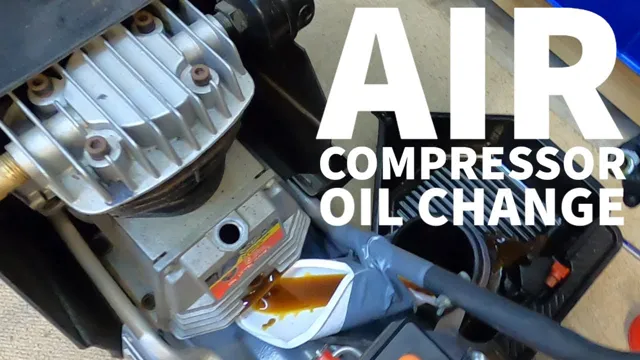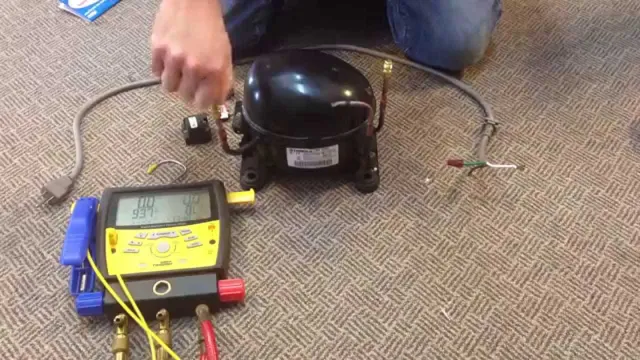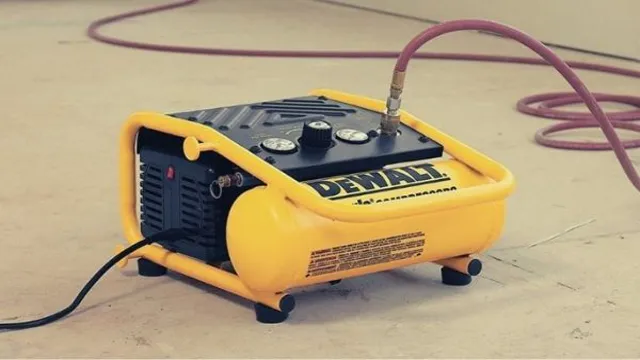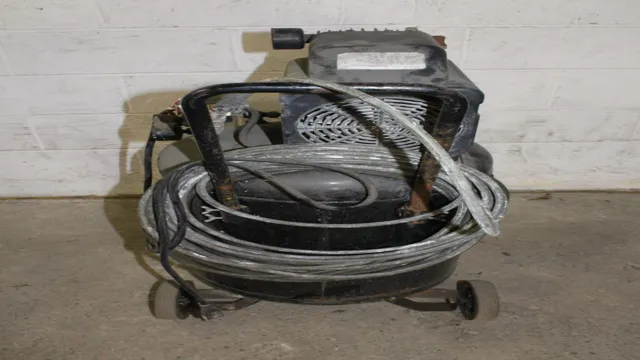How a Pressure Switch Works on Air Compressor: Understanding the Mechanisms
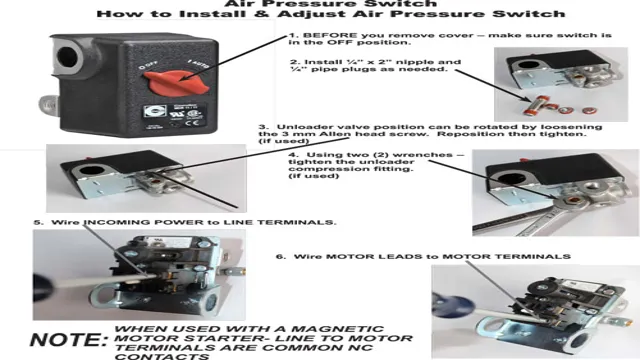
Do you have an air compressor at home or work? Have you ever wondered how it manages to automatically turn on and off when the tank pressure reaches a certain level? Well, that’s thanks to the pressure switch, an essential component of any air compressor. Without it, the compressor would either run continuously or not stop when it reaches the desired pressure, causing safety hazards and reducing its lifespan. In this blog, we’ll delve deeper into how a pressure switch works on an air compressor and its importance in ensuring smooth and efficient operation.
So, let’s get started!
What is a Pressure Switch?
A pressure switch is an automatic control device that turns on and off the power to an air compressor. It works by sensing the pressure in the compressor tank and then activating or deactivating the motor as needed. When the pressure inside the tank drops below a certain level, the pressure switch will turn on the compressor motor, causing it to fill the tank with air.
When the pressure reaches a specific level, the pressure switch will turn off the motor, preventing any further overfilling. This vital function means that the pressure switch must be calibrated correctly and maintained regularly to ensure that an air compressor operates safely and efficiently. Understanding how a pressure switch works on an air compressor is critical for anyone who relies on compressed air for their work, as it ensures that they can operate their equipment safely and with confidence.
Defining A Pressure Switch
A pressure switch is an electrical device that controls the operation of an electrically driven pump or compressor. It generally consists of a pressure sensor, a switching mechanism, and an actuator. The switch is used to detect changes in pressure and can either shut off the system or turn it on depending on the pressure level.
The pressure switch can be set to specific pressure levels, making it ideal for a wide range of applications. It is commonly used in the HVAC industry, as well as in industrial and manufacturing settings. Think of it as a traffic light for your system- it helps to regulate the flow of pressure and ensures that your machinery runs smoothly, preventing damage and accidents.
It is important to ensure that the pressure switch is properly maintained and calibrated to avoid any issues that could cause costly downtime and repairs.
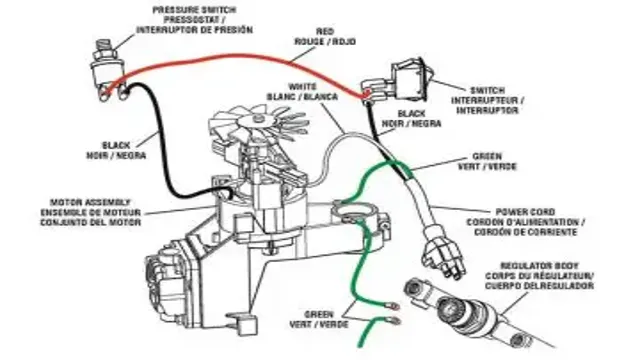
Components of a Pressure Switch
A pressure switch is an electrical device that is used to control the pressure of various liquids and gases in different industrial applications. It functions to detect the changes in pressure and then responds accordingly at a set pressure point, turning on or off a process or application. It comprises several essential components such as the sensing element, electrical contacts, and the housing containing the switch’s internal parts.
The sensing element, which is the device’s most crucial part, is responsible for measuring the pressure changes and triggering the switch’s response. Electrical contacts, on the other hand, are responsible for establishing or breaking the circuit, depending on the pressure changes. Lastly, the housing houses the switch’s internal components, securing them from external temperatures, pressures, and other environmental factors.
With these components, a pressure switch makes industrial processes more efficient and cost-effective by allowing for automatic control and regulation of fluids and gases, reducing errors and enhancing overall production.
How Does a Pressure Switch Work?
If you’re wondering how a pressure switch works on an air compressor, it’s actually quite simple. A pressure switch is an electrical device that controls the compressor’s output pressure. It is composed of two parts: a switch and a pressure sensor.
The switch turns the compressor on and off based on the pressure sensor’s readings. When the pressure in the compressor tank reaches a specific set point, the switch will turn off the compressor. When the pressure drops below a predetermined value, the switch will turn the compressor back on.
A pressure switch is a critical component in maintaining a steady supply of compressed air, as it prevents the compressor from over-pressurizing and causing damage. In addition, it helps to save energy by turning off the compressor when it’s not needed, reducing unnecessary wear and tear on the machinery and prolonging its lifespan. So, if you’re looking for an efficient and reliable way to control your air compressor’s output pressure, investing in a good pressure switch is key.
Step-by-Step Process of Pressure Switch Operation
A pressure switch is an essential component in a variety of control systems that require the monitoring of pressure changes. This switch works by converting the pressure level into an electrical signal that can be used to trigger a response from other components in the system. The operation of a pressure switch involves several steps.
When the pressure reaches a predetermined level, the switch’s sensing element deforms, which activates or deactivates its contacts. This action can start or stop a motor, pump, compressor, valve, or other devices in the system. The switch will remain in its new state until the pressure changes in the opposite direction, causing it to revert to its original state.
Proper adjustment of the pressure switch is crucial to ensure that it operates effectively, and periodic maintenance and inspection can help prevent malfunctions. So, if you’re looking for a reliable way to monitor pressure levels in your system, a pressure switch can be an excellent solution.
The Role of Pressure Settings in Pressure Switches
A pressure switch is essentially an electrical device that is specially designed to control or activate a physical process based on a predetermined pressure point. It works by sensing pressure changes in a particular system and using that information to either open or close an electrical circuit. The role of pressure settings in pressure switches is quite crucial, as they determine the pressure range at which the switch activates or deactivates depending on the application requirements.
By adjusting the pressure settings, one can control the operating range of the switch and ensure that it turns on or off at the desired pressure points, maintaining the system’s safety and integrity. For example, a pressure switch in an air compressor can be calibrated to turn off the motor when the tank pressure reaches a certain level, preventing over-pressurization and potential damage. The effective operation of a pressure switch ultimately depends on its sensitivity and the accuracy of its pressure settings, making them an essential part of any system’s pressure control mechanism.
The Function of Electrical Contacts in Pressure Switches
Pressure switch A pressure switch is a device that is used to detect changes in pressure and convert them into an electrical signal. It works by using an electrical contact to open or close a circuit based on the pressure level. The function of electrical contacts is critical in pressure switches as they perform the switching action.
When the pressure exceeds or drops below a set limit, the switch’s electrical contacts are activated to open or close the circuit, controlling the connected equipment’s operation. The contact material should also be resistant to wear and tear, as the switch may be activated multiple times in a day. Pressure switches are essential in various industries, from monitoring pressure in HVAC systems to controlling pressure in pneumatic systems.
Without them, operational efficiency and safety would be compromised. Hence, pressure switches’ reliability and accuracy are crucial for a wide range of applications.
Why is a Pressure Switch Important?
If you’re wondering how a pressure switch on an air compressor works, firstly, it’s important to understand what it does. Essentially, the pressure switch acts as a control to monitor and regulate the air pressure inside the compressor’s tank. It automatically turns the compressor on when the pressure drops below a certain level and turns it off when the pressure reaches a specific upper limit.
This helps to ensure efficient operation and prevent damage to the compressor. Without the pressure switch, the compressor could continue running even if the pressure gets too high, causing it to overheat and potentially lead to a dangerous malfunction. Likewise, if pressure drops too low, the compressor would fail to function properly.
In short, a pressure switch is an essential component of any air compressor setup, ensuring safe and efficient operation. So, make sure to choose a high-quality pressure switch for your air compressor for long-term reliability and performance.
Benefits of Using a Pressure Switch on Air Compressors
Air compressor operators often underestimate the importance of a pressure switch in their equipment. A pressure switch is an essential component that monitors the level of air pressure in the tank and signals the compressor when to increase or decrease the pressure. By doing so, it safeguards the compressor from overworking and prolongs its lifespan.
Moreover, a pressure switch ensures a steady supply of air by stopping the compressor from running when the tank reaches the desired pressure level. This prevents the compressor from continuously pumping air, which can lead to overheating and potential damage. In essence, operating an air compressor without a pressure switch would be like driving a car without a speedometer; it’s crucial to have a monitoring system to keep the equipment running safely and efficiently.
Therefore, investing in a pressure switch is crucial for anyone who wants to maximize the performance and longevity of their air compressor.
Preventing Damage and Costly Repairs with Pressure Switches
A pressure switch is a crucial component that helps to prevent damages and costly repairs. It is a device that senses the pressure changes in a hydraulic or pneumatic system and triggers a response based on the set pressure limit. In other words, it acts as a safeguard against potential issues caused by overpressure.
For instance, if the pressure in a system exceeds a certain level, the pressure switch will activate and shut down the system to prevent irreversible damages. This could be particularly important in heavy machinery, where the cost of repairs could be exorbitant. Pressure switches are also essential in industries where safety is paramount, such as the oil and gas industry.
By ensuring that pressure is maintained within a safe range, pressure switches help to prevent accidents and protect personnel. Overall, pressure switches are a simple yet effective solution that provides valuable protection against damages and costly repairs, making them a necessary investment for any industry that relies on hydraulic or pneumatic systems.
Conclusion
In summary, a pressure switch on an air compressor is like a bouncer at a club. It controls the flow of air by monitoring the pressure inside the tank and deciding when it’s time to let more air in or cut off the supply. Just like a bouncer keeps rowdy party-goers from getting too out of hand, a pressure switch keeps the air compressor from over-pressurizing and potentially causing damage.
So the next time you hear your air compressor turning on and off, thank the trusty pressure switch for doing its job and keeping things under control.”
FAQs
What is a pressure switch on an air compressor?
A pressure switch is a device used to control the operation of an air compressor by monitoring the pressure in the tank and turning the compressor on and off as needed.
How does a pressure switch work?
A pressure switch works by using air pressure to activate an internal mechanism that either completes or breaks an electrical circuit, which in turn controls the compressor’s operation.
What are the different types of pressure switches used on air compressors?
The different types of pressure switches used on air compressors include differential, adjustable, and single-set switches.
How do you install a pressure switch on an air compressor?
To install a pressure switch on an air compressor, you should first disconnect the power supply and then remove the old switch before wiring in the new one. It’s important to follow the manufacturer’s instructions and use the correct tools and materials.
What are some common problems that can occur with a pressure switch on an air compressor?
Common problems with a pressure switch on an air compressor include faulty wiring, a malfunctioning switch, a broken or damaged diaphragm, and inaccurate pressure readings.
How often should you replace a pressure switch on an air compressor?
The frequency with which you should replace a pressure switch on an air compressor will depend on a variety of factors, including the make and model of the compressor, how often it’s used, and the conditions under which it operates. It’s generally recommended that you replace the switch every couple of years to ensure optimal performance.
Can you repair a pressure switch on an air compressor yourself?
Depending on the nature of the problem, it may be possible to repair a pressure switch on an air compressor yourself. However, it’s important to have the necessary knowledge and experience to do so safely and effectively. In many cases, it’s best to consult with a professional technician to ensure that the repair is done correctly.

